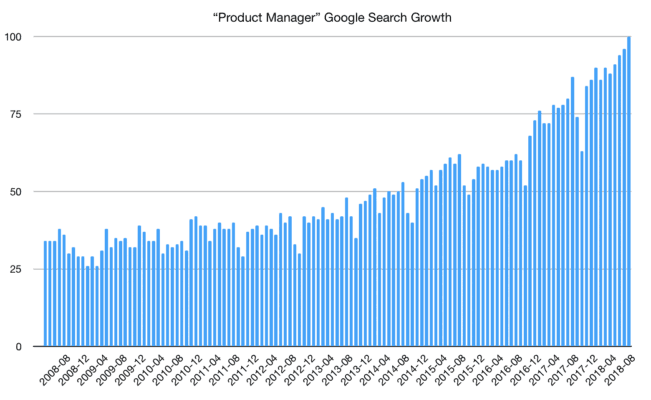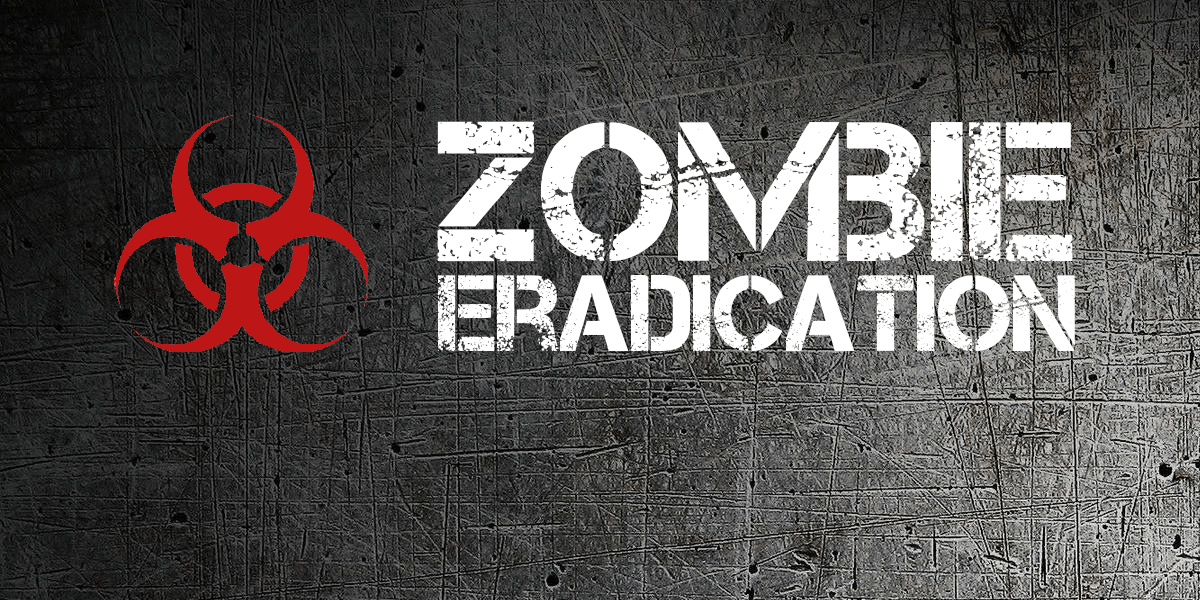In a famous video on product market fit, Marc Andreessen uses the term “zombie” to describe what happens when you fail to build a breakout product. Your product, or business, is technically dead but still moving forward. Everyone can feel it, but they deny it and keep going. They expect the next release or the next sale to save the day. The business is in a constant state of decay. It won’t get better, but it also won’t die. It’s just waiting for someone to drive a stake through its head. All you need to do is look around. Notice the lack of emotion. Everyone is resigned to his or her fate. The business lumbers along, with nowhere to go.
A zombie product (or business) comes from innovation failure, and the virus is spreading. In a recent McKinsey poll, 84% of global executives reported that innovation was essential to their growth strategies, but a staggering 94% were dissatisfied with their organizations’ innovation performance. Most people would agree that the vast majority of innovations fall far short of ambitions.
When CB Insights looked at why startups fail, it’s not surprising the majority of the answers center around product issues – not solving the right product problem, not getting enough buyers for the product, lacking focus on the problem to solve; you get the idea. After all, a startup is the product. Get it right, and you have a business. Get it wrong, and you die. It’s worth noting that this research doesn’t account for the zombie businesses. If these were added to the mix, the reality would look far worse.
This struggle, and recognition of the challenge, created an explosion of excitement around all things product management. Over the last ten years, interest has grown 4x. As the pace of innovation in all industries accelerates, companies recognize the importance of having people that repeatedly bring killer products to market.

Startups are another growth driver. These business saplings pour years of work into getting their product right, so they can one day join the ranks of their silicon valley redwoods. Whether you are a FORTUNE 500 company that’s been around for 100 years or a green-behind the ears startup that’s been around for 100 days, getting the product right determines your fate.
However, most company leaders don’t just want to get it “right.” They want to crush it. They don’t just want product-market fit (which is hard), they want to be the next unicorn. They want a breakout product. Their goal is to dominate their market, not to be number 7 out of 15. Why? They know that you’re #1 or #2 in your market or you are going to become a zombie business.
Pro tip: Read Play Bigger, they share some great insight on this point. “Our research shows that the category leader – we call them a category king – commands 76% of the market cap of the category.”
To dominate a market, you need to nail the product. Unfortunately, the path from product idea to breakout success is a challenging road. Every choice could put you on the way to wild growth or product death.
RETHINK PRODUCT MANAGEMENT
Judging by the buzz in the industry, the Google trends and the number of books on the topic, the key to success lies in product management. Unfortunately, after years of focus on this topic, startup after startup fails. New company innovation, after innovation, fails.
Instead of thinking about product management as a person, what if we think about it as a mindset?
Instead of thinking about product management as an individual, what if we instead think about the outcome?
There is no question that getting product right is complicated. Intuitively we understand that product management is essential. However, we have to ask, what is it? Moreover, are we doing everything we can to get the results we want?
Let’s start by defining product management.
Wikipedia describes it this way: “Product management is an organizational lifecycle function within a company dealing with the planning, forecasting, and production, or marketing of a product or products at all stages of the product lifecycle.” I feel asleep halfway through reading this definition.
Let’s take a different approach. Let’s start with the word product. The definition is simple. A product is something offered to a market.
Now take management. The business dictionary defines it as “The coordination of the activities of a business to achieve defined objectives.”
Putting these two definitions together, and simplifying them, product management is “The coordination of product-related activities to achieve business objectives.”
Now we are getting somewhere. Let’s go further. What are “business objectives”? For some, it may be revenue. For others, it may be engagement or customer satisfaction. Some may focus on downloads, leads, impressions, return visits or a whole host of other metrics. These numbers are indicators. They tell us if the product team built the right thing, at the right time, for the right market.
WHO OWNS PRODUCT
In practice, this all appears straightforward. We have a way to measure success, and we have a magical team, the product managers, that we can hold accountable.
But who owns product in an organization? Is it the CEO, Chief Product Officer, VP of Product, Group Product Manager, Product Manager? Don’t get caught up in the word “own.” Instead, think responsibility. When it comes to product, throw hierarchy out the window. It’s everyone’s responsibility to think about what the business is trying to achieve and how the product can deliver.
At this point you might be yelling at the screen, telling me I don’t understand. You might be thinking of the chaos the ensues if everyone is sharing his or her latest idea for a great new feature. Instead of thinking about the current world, imagine a business where every part of the organization focuses on the impact their products have on the customer.
I don’t care if you are a customer service rep, an engineer, a sales rep, a manager or an executive. Everyone in the company can discover opportunities to move the needle on the business objectives.
Don’t believe me? Check out this video from Kevin Hale, Founder of Wufoo and Partner at Y Combinator. He shares story after story about how his team implemented this strategy.
Recognizing we can all have an impact isn’t enough. We have to know what to look for. Our teams need to ask the right questions. Across the company, everyone needs to understand what the customer is trying to achieve. This knowledge is vital.
Pro Tip: every one, regardless of your role, should read The Effective Executive. The title is unfortunate, because it is relevant to every employee, everywhere. It is the single best book you can read to understand how you can have a bigger impact on your business, regardless if you are a one-person freelancer or an entry-level employee in a 10,000 person organization.
SUCCESS AND FAILURE
Beyond Wuffoo there are plenty of other examples of companies that get this right. These teams have a relentless focus on delivering results – not just revenue for the business, but results for the customer. Helping them achieve what they care about most.
I believe that part of the success comes from the fact that these companies have a product culture that permeates the organization.
- Tesla – Elon Musk is one of the best product visionaries of our time, and he’s marshaled multiple companies to keep pushing the boundaries. Delivering what most never thought was possible.
- Amazon – Jeff Bezos has a relentless focus on delivering for the customer, not just today, but for the long term. In the process, he’s built one of the most valuable companies of all time, and one that doesn’t appear will ever stop.
- Apple – Steve Jobs built the greatest product-focused company ever. What else is there to say?
- Google – Search, Gmail, YouTube, Chromebooks, Adwords, Google Maps, Google Docs – the list goes on
For as great as these companies are, they’ve all had plenty of failures. Remember the Amazon Phone, The Apple Newton or Google Wave? All monster failures. However, in the words of Elon Musk, “if things are not failing, you are not innovating enough.”
I’ve been working in product for over 20 years. I helped create products that sold for millions of dollars. I developed the product management methodology for a 1,200 person company. I launched a new product line that helped a company on it’s way to an IPO. Next to each one of those successes I’ve had plenty of failures. Each one taught me something. Every product that died helped feed the next success.
If failures are inevitable, is it at least possible to increase our chance of success? Apply lean, work through the four steps to an epiphany, go agile, understand what customers want, avoid the innovator’s dilemma, concentrate on the job to be done, develop a blue ocean strategy. These are not only concepts, but they’re also popular books you’ve probably read. Each one carries some tremendous insight.
However, even with this knowledge, it doesn’t seem to be enough. There is a gap between what we know and what we do. In crunch time, we fall back on old habits. It’s faster, it’s more comfortable, and in the moment, there is no way to prove it won’t work. However, we’ve seen the numbers. We know how the story ends.
There is an adage in golf. It says you need to hit 10,000 balls to engrain a swing change. To put that in perspective, that would require over 140 trips to the driving range, banging out a large bucket of balls. That’s a lot of practice. Until the new motion becomes second nature, golfers rely on “swing thoughts.” These are simple tools they can pull from before hitting a shot. This thought helps tell their body what to do.
Like a golfer, I believe we can take some of the mystery out of building breakout products. It starts with creating the right product swing thoughts. Just like golf, it’s impossible to be perfect. The goal isn’t to eliminate failure. Instead, we want to reduce our misses.
GOING PRO
A true professional dedicates oneself to master his or her craft. Product is no different. It is a skill. It is both science and art. With purposeful practice, anyone can get better.
“The professional respects his craft. He does not consider himself superior to it. He recognizes the contributions of those who have gone before him. He apprentices himself to them.
The professional dedicates himself to mastering technique not because he believes technique is a substitute for inspiration but because he wants to be in possession of the full arsenal of skills when inspiration does come. The professional is sly. He knows that by toiling beside the front door of technique, he leaves room for genius to enter by the back.” – The War of Art
I want to help others go pro. Over the last six months, a fellow product leader and I have been digging into this space to understand the problems and gaps that exist. We found a host of issues that we believe we can address and we are still looking for feedback.
- What do you believe is holding you back from building breakout products?
- What areas do you want to learn more about?
- How do you learn best?
Share your thoughts below and be sure to follow me on Medium or Twitter to keep up to date on our progress. We’ll be launching soon and will need some early adopters and lots of feedback.



